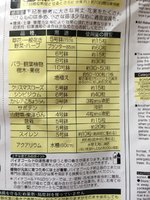FinnLakk
Yamadori
Apologies if this question has been answered, I did scroll through and couldn't find an answer.
I am coming to the stage where some of my trees are ready to be going into entirely in-organic substrate, which obviously is inert.
So when it comes to supplying the tree with all of the ingredients it needs for healthy growth is using biogold fert as the only "additive" sufficient? or should I also be looking at fish emulsion+ kelp as an extra additive?
I'm in the UK but please show me whatever you guys use and I'll see if I can find it in my market or a similar alternative.
Cheers!
I am coming to the stage where some of my trees are ready to be going into entirely in-organic substrate, which obviously is inert.
So when it comes to supplying the tree with all of the ingredients it needs for healthy growth is using biogold fert as the only "additive" sufficient? or should I also be looking at fish emulsion+ kelp as an extra additive?
I'm in the UK but please show me whatever you guys use and I'll see if I can find it in my market or a similar alternative.
Cheers!


